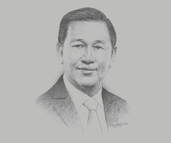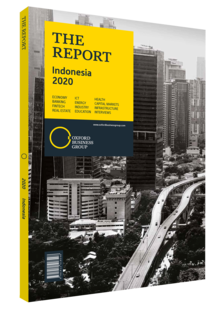Liew Mun Leong, Chairman, Changi Airport Group: Interview

Interview: Liew Mun Leong
What factors make Indonesia’s airport infrastructure market attractive to outside investors?
LIEW MUN LEONG: Indonesia currently ranks 10th globally in terms of total air passenger traffic numbers, and is expected to rise to fourth place by 2036, behind China, the US and India. Indonesia is Changi Airport’s largest market, with more than 8.3m passengers travelling on flights between Indonesia and Singapore in 2019. Furthermore, Singapore received 3m visitor arrivals from Indonesia in 2019, while Indonesia received around 2m arrivals from Singapore. Nevertheless, Indonesia is currently suffering from a shortage of airports: while the country’s population is 80% that of the US, Indonesia has only 25% the number of airports with scheduled commercial flights and, according to projections from Airports Council International, it will have 640m air passengers by 2040. This presents major opportunities for investment, though this will depend not just on building more airports, but also on constructing them in the right locations and managing them well.
We are closely monitoring the impact Covid-19 will have on air travel and the tourism industry. However, we believe the current administration’s 10 New Balis plan is set to play a considerable role in the further development of the tourism industry. The plan is to replicate Bali’s success for sustainable tourism development across Indonesia without over-reliance on Bali. In 2019 the Indonesian government awarded a 25-year concession to the consortium of Changi Airports International and Cardig Aero Services to operate and manage Komodo Airport. The project is a prime example of the government’s varied approach to the development of new tourist destinations, with each one being tailored to suit specific needs. Komodo Airport will draw visitors interested in the island’s unique geographical beauty. It will be marketed as a premium destination, as it is not designed to attract the same number of visitors as Bali. We expect air passenger traffic to the island to increase from 600,000 in 2020 to close to 4m by 2044.
How can the efficiency of both air cargo transport and passenger travel be improved?
LIEW: There is significant potential to improve transport efficiency, and various steps will needed to achieve this. While this includes – most significantly – the use of new technologies, it also extends beyond the airport. The most difficult stage in the transportation of cargo takes place after it has arrived at an airport and when it has to be transported to more remote destinations, particularly those on distant islands. Indonesia is, of course, a lot more complex than Singapore, in that it is a giant archipelago made up of over 17,000 islands. Improving the air cargo supply chain and linkages with road and rail travel is a massive challenge. The country has a lot of potential and ability to improve, and the most important thing in this regard is not financial capital, but human resource capability. With President Joko Widodo’s focus on human capital development, significant efforts will be made to develop the population’s technical skills. Luckily, Indonesia has a young and energetic population that can learn new skills quickly, and the country is prepared to make use of new technologies to speed up development. The role of airports has changed considerably, with travellers now often spending three or four hours in situ. In the same way that shopping malls are no longer places to simply do one’s shopping, modern airports are no longer just air transportation nodes but are also destinations in their own right. It is a given that many air passengers find the experience of travelling stressful. Most have one thing on their mind, namely progressing through the airport as quickly as possible. This requires every process to run seamlessly. The potential stress incurred during immigration and security checks may further add to the concerns of passengers. Gardens, lounges, swimming pools and cinemas focus on creating an atmosphere that is traveller friendly. The knock-on effect is that such an atmosphere creates opportunities to entice more retail spending and boost non-aeronautical revenues.
You have reached the limit of premium articles you can view for free.
Choose from the options below to purchase print or digital editions of our Reports. You can also purchase a website subscription giving you unlimited access to all of our Reports online for 12 months.
If you have already purchased this Report or have a website subscription, please login to continue.

